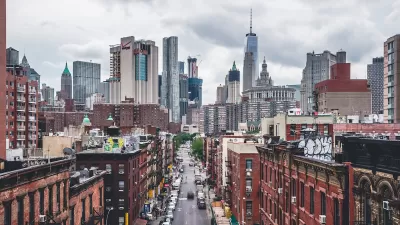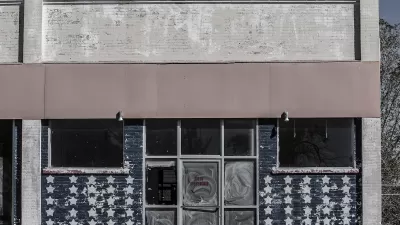Retailers must respond to changes to stay successful, and urbanization is one of the major factors influencing changing circumstances. Retail representatives that react with care and thoughtfulness contribute to positive urbanization.

Retailers must respond to changes to stay successful. Urbanization is one of the major factors influencing changing circumstances. Retail representatives that react with care and thoughtfulness contribute to positive urbanization. Here are some examples of how that can pan out.
Making it Easier for People to Get What They Need
The European Commission published survey details about how people’s shopping habits changed in 2020. One of the takeaways was that 81% of people shopped closer to home or supported local businesses. That trend also emerged in other areas of the world.
Today’s adaptive retailers should bear that in mind while staying aware of the “15-minute city” ideal. It’s a vision whereby people could accomplish most of their daily necessities by taking a short stroll or bicycle ride from their homes.
Mr. Price is a homewares and clothing chain in South Africa. It recently opened standalone stores selling baby products to enter a highly competitive market. Analysts say urbanization, changed lifestyles, and new parental preferences have all combined to raise the demand for baby products in the country.
The company conducted two years of market research before launching the standalone stores. The goals are reportedly to make parenting more affordable and convenient through the retail experience.
Being profitable and inspiring customer loyalty as a retailer is all about meeting customers’ needs with minimal friction. This example shows that aim in action.
Embracing a Creative Placemaking Trend
Many forward-thinking retailers utilize real-time space visualization tools for better planning. An emerging trend called creative placemaking takes space usage to another level. It allows retailers and other businesses to envision how they can best fit into and expand existing landmarks.
For example, Charity Hospital in New Orleans closed in 2005 due to the devastation from Hurricane Katrina. However, it redeveloped into a $300 million mixed-use space that includes retail, residential units and a medical museum.
Moreover, city officials in Nashville, Tennessee, committed to restoring Victorian buildings along Second Avenue damaged by a bomb. Some associated planned upgrades include curated retail stores and outdoor dining in a corridor connecting First and Second avenues to the river.
A common worry about urbanization is that it will destroy existing establishments or buildings to make way for new ones. However, that’s not the only option. When retailers participate in these revitalization efforts, people are more likely to link them to positive urbanization.
Moving IKEA to a More Accessible Location
When most people think of stores associated with the Swedish furniture and home goods brand IKEA, they envision huge warehouses outside city centers. However, a new location under construction on London’s Oxford Street could change that perception while showing a practical response to growing urbanization.
The location is in the heart of a prime London shopping area. IKEA will occupy three levels of the seven-story building. The decision to put the retailer in an unconventional location was due to a desire to increase accessibility. It was also a response to global movements associated with urbanization, environmental awareness and changing demographics that affect how people live and shop.
This decision could help IKEA become more profitable by reaching people who cannot ordinarily get to its stores because of a lack of transportation. It could also spark a positive urbanization trend where retailers that normally occupy sprawling warehouses opt to make the best use of vertical space instead. If that happens, the retail outlets will favorably impact their communities by fitting into existing buildings located in convenient places.
Responding Well to Urbanization Takes Forethought
Running a retail operation is a constant juggling act of evaluating and responding to various factors. As urbanization becomes more prominent in many areas of the world, these examples will help retailers plan how to best respond to remain mindful of residents’ needs.

Study: Maui’s Plan to Convert Vacation Rentals to Long-Term Housing Could Cause Nearly $1 Billion Economic Loss
The plan would reduce visitor accommodation by 25,% resulting in 1,900 jobs lost.

North Texas Transit Leaders Tout Benefits of TOD for Growing Region
At a summit focused on transit-oriented development, policymakers discussed how North Texas’ expanded light rail system can serve as a tool for economic growth.

Using Old Oil and Gas Wells for Green Energy Storage
Penn State researchers have found that repurposing abandoned oil and gas wells for geothermal-assisted compressed-air energy storage can boost efficiency, reduce environmental risks, and support clean energy and job transitions.

Santa Barbara Could Build Housing on County Land
County supervisors moved forward a proposal to build workforce housing on two county-owned parcels.

San Mateo Formally Opposes Freeway Project
The city council will send a letter to Caltrans urging the agency to reconsider a plan to expand the 101 through the city of San Mateo.

A Bronx Community Fights to Have its Voice Heard
After organizing and giving input for decades, the community around the Kingsbridge Armory might actually see it redeveloped — and they want to continue to have a say in how it goes.
Urban Design for Planners 1: Software Tools
This six-course series explores essential urban design concepts using open source software and equips planners with the tools they need to participate fully in the urban design process.
Planning for Universal Design
Learn the tools for implementing Universal Design in planning regulations.
Ascent Environmental
Borough of Carlisle
Institute for Housing and Urban Development Studies (IHS)
City of Grandview
Harvard GSD Executive Education
Toledo-Lucas County Plan Commissions
Salt Lake City
NYU Wagner Graduate School of Public Service






























